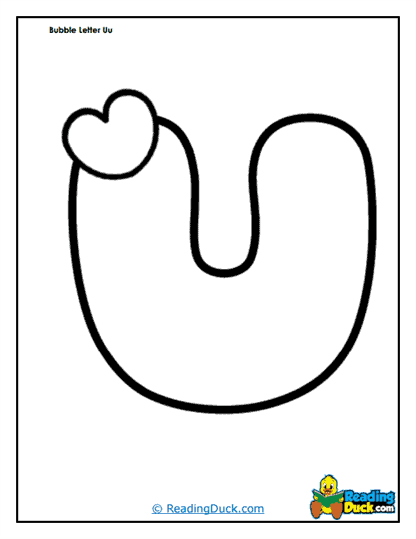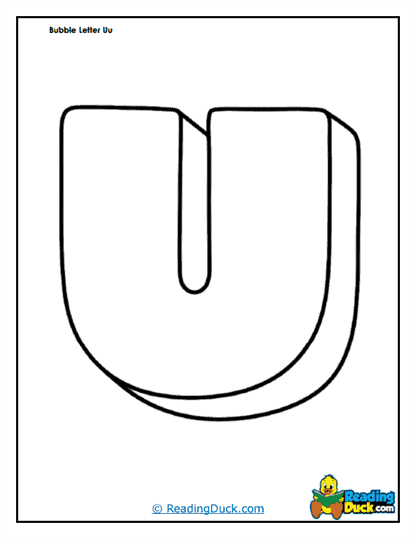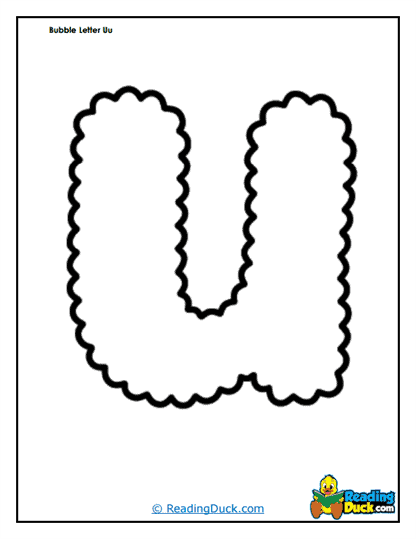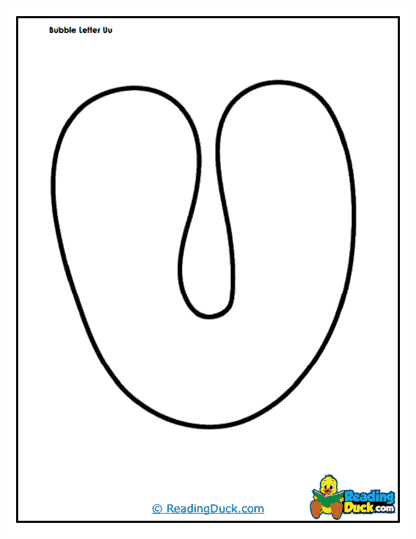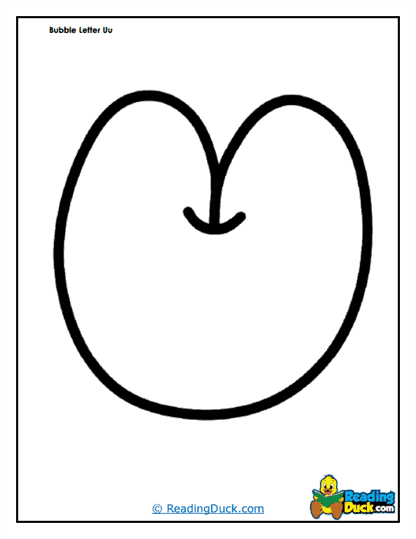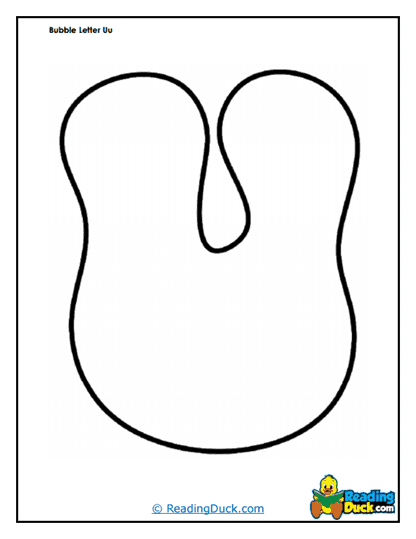Bubble Letter Uu Worksheets
About Our Bubble Letter Uu Worksheets
Our bubble letter U worksheets are carefully crafted educational resources aimed at assisting young learners in developing foundational literacy skills. These worksheets are primarily targeted at preschool and early elementary students who are in the initial stages of learning the alphabet. They focus on the letter "U," both in its uppercase and lowercase forms, offering a comprehensive approach to recognition, tracing, and writing. By engaging with these materials, children not only improve their letter identification skills but also strengthen their fine motor abilities, which are crucial for writing. Additionally, the worksheets are designed to blend learning with play, ensuring that children remain interested and motivated as they practice.
The "bubble letters" featured in these worksheets are large, outlined versions of the letters "U" and "u," making them highly accessible and engaging for young learners. These oversized, balloon-like shapes capture children's attention and make the learning process more visually stimulating. Their bold and inflated appearance provides ample space for children to practice tracing or coloring within the lines, helping to improve hand-eye coordination. This visual design also allows educators and parents to introduce creative activities, such as decorating the bubble letters with stickers, glitter, or other materials, to further enhance engagement. Overall, the unique design of bubble letters transforms a simple learning task into an enjoyable and interactive experience, fostering a love for learning early on.
How Can They Help Students?
Letter Recognition
The bold and outlined design of bubble letters makes it easy for children to visually identify the shape of the letter "U." This distinct style helps children distinguish it from other letters, even those with similar curves like "V" or "C." By repeatedly seeing and interacting with the bubble letters, children can build a mental map of what the letter "U" looks like. This visual recognition is a foundational skill that supports early literacy. Moreover, these bold designs often come with engaging illustrations or themes, making them more appealing and holding a child’s attention during learning.
Fine Motor Skills Development
Tracing and coloring the bubble letters is an excellent activity for developing fine motor skills. These skills are critical for writing, as they involve small muscle movements in the fingers, hands, and wrists. As children trace the bubble letter "U," they practice controlled, deliberate movements that improve hand strength and dexterity. This process also enhances hand-eye coordination, as kids learn to align their pencil strokes with the outlines of the letter. Additionally, coloring the letters helps children develop a proper pencil grip, which is essential not only for writing but also for drawing and other academic tasks later on.
Creativity and Fun
Bubble letters offer children an exciting way to express their creativity while learning. Coloring or decorating the letter "U" can transform a routine educational activity into a fun, imaginative experience. Kids can use a variety of materials-crayons, markers, stickers, glitter, or even paint-to personalize their work, making it uniquely their own. This creative freedom allows children to associate learning with positive emotions, reducing anxiety or resistance to practicing letters. Furthermore, when students enjoy their learning activities, they’re more likely to stay engaged and retain the information they’re working on.
Phonics Practice
Many of the worksheets incorporate phonics practice by pairing the letter "U" with words and images that start with the same letter. For example, pictures of an umbrella, unicorn, or unicycle can be included to reinforce the connection between the letter and its sound. This combination helps children understand that letters represent sounds, a concept known as phonemic awareness. By saying the words out loud while looking at the letter, children strengthen the association between the written symbol and its corresponding sound. Over time, this practice builds the foundation for reading and spelling skills.
Reinforcement of Learning
Repetition is a fundamental aspect of learning, and bubble letter worksheets offer ample opportunities for practice. By tracing and coloring the letter "U" multiple times, children become familiar with its shape and formation. Repetition helps solidify the neural pathways in the brain associated with writing, making the process more automatic over time. These worksheets often include a mix of activities-such as matching, tracing, and freehand writing-to keep the practice varied and engaging. This repetitive exposure ensures that children can recognize and write the letter "U" with confidence and accuracy.
Sensory Integration
Bubble letter worksheets can also support sensory learning, engaging multiple senses to reinforce understanding. For tactile learners, filling the letters with textured materials such as sand, rice, or fabric pieces can make the activity more engaging and memorable. Visual learners benefit from the bold and distinct designs of the bubble letters, which help them focus on the letter's shape and form. Kinesthetic learners can trace the letter with their fingers, draw it in shaving cream, or shape it with playdough, allowing them to associate the physical movement with the learning process. These multisensory approaches cater to different learning styles and make the experience more interactive.
Pattern Recognition
Many worksheets include patterns or sequences that incorporate the letter "U," helping children recognize it in various contexts. For example, a worksheet might feature rows of letters with the task of circling every "U" that appears among other letters. These activities encourage children to identify and focus on patterns, a skill that is critical for reading fluency. Spotting the letter "U" in different fonts, styles, or sizes also helps children generalize their recognition skills to real-world text. By improving pattern recognition, children build a stronger foundation for decoding words and sentences when they start reading.


